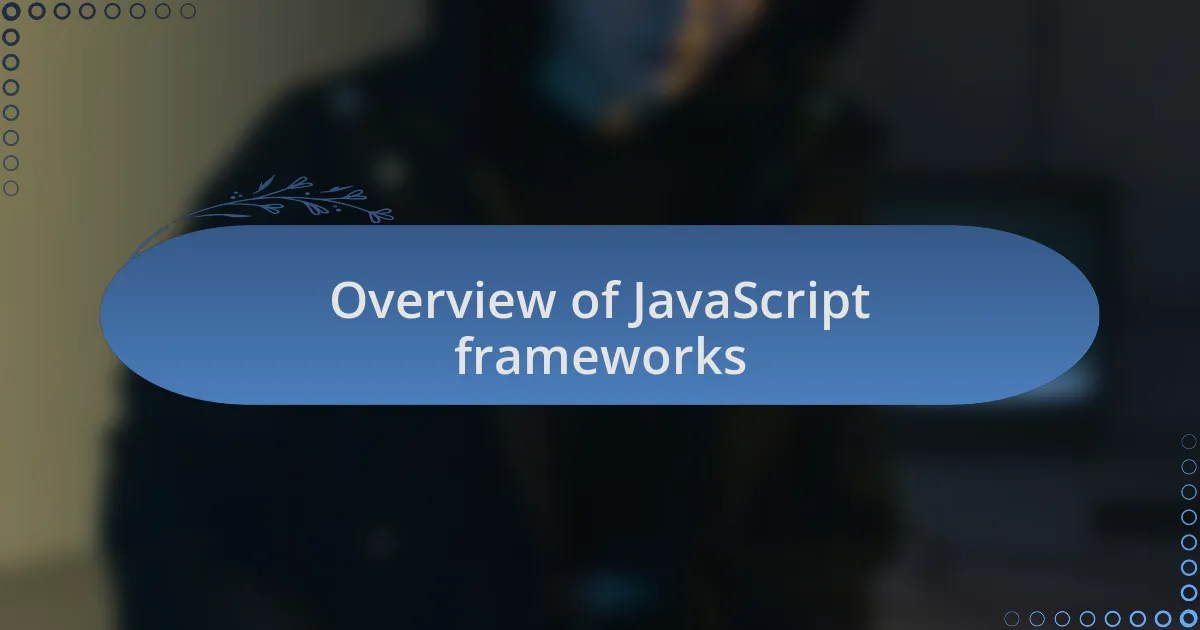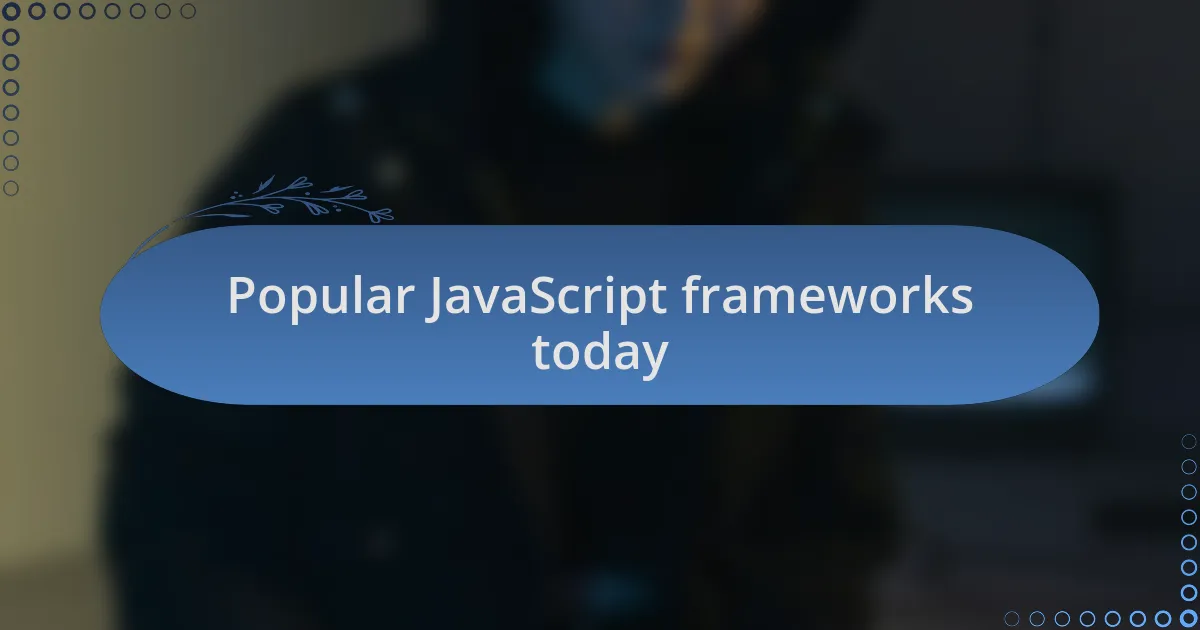Key takeaways:
- JavaScript frameworks are crucial for efficient web development, providing a structured approach that enhances workflow.
- Community support, scalability, and learning curve are key criteria for choosing a framework for projects.
- Personal experiences with frameworks, such as Angular and Vue, highlight the importance of adaptability and understanding complexity versus simplicity.
- Framework choice can significantly impact project success and developer satisfaction, underscoring the need for careful evaluation.

Overview of JavaScript frameworks
JavaScript frameworks are essential tools for modern web development, offering a structured way to create dynamic applications. I remember my first experience with a framework; it was like learning to ride a bike with training wheels. Suddenly, I could focus more on building features rather than getting lost in the overwhelming number of JavaScript functions.
There are various frameworks out there, each with its unique strengths. For instance, React is often hailed for its flexibility and component-driven architecture, whereas Vue is celebrated for its simplicity and gentle learning curve. Have you ever found yourself torn between options? I certainly have—when choosing a framework, I realized it’s not just about the tech; it’s also about how it fits my workflow and the project’s needs.
When I dive into a new framework, I always look for community support and documentation. It’s reassuring to know that if I hit a wall, there’s a community ready to help. Reflecting on my experiences, I can’t stress enough how vital these resources are; they often transform a daunting task into an achievable one. Ultimately, the right framework can make or break your development experience, leading to either frustration or efficient and enjoyable coding.

Popular JavaScript frameworks today
React continues to dominate the landscape of JavaScript frameworks today. Its component-based architecture allows developers to create reusable UI components, which I find incredibly efficient. When I first started using React, it felt like suddenly moving from a chaotic workspace to a well-organized studio where every tool had its place.
Vue, on the other hand, has its charm with a more approachable learning curve. I can still remember the satisfaction I felt when I built my first Vue app; it was straightforward, and everything just clicked. The simplicity doesn’t mean it’s lacking in power; have you ever worked on a project where less complexity led to faster results? I can confidently say that Vue can be a game-changer in such scenarios.
Angular is another heavy-hitter worth mentioning. It offers a robust framework that’s perfect for enterprise-level applications. When I first tackled an Angular project, I was impressed by its powerful tools for building large-scale apps, but I also found the learning curve a bit steep. If a framework feels overwhelming, how do you navigate through it? I’ve found that taking time to master the basics can pave the way for smoother development later on.

Criteria for choosing a framework
When evaluating a JavaScript framework, the first criterion I consider is community support. A strong community can be a lifeline, especially when you’re stuck on a problem. I remember grappling with an unfamiliar error in React, and a quick search on Stack Overflow led me to a thorough explanation from someone who had faced the same issue. It’s those moments that reinforce the importance of a vibrant community.
Another key factor is the framework’s scalability. Working on smaller projects can sometimes be a breeze, but what about when you’re tasked with building something larger? I recall a project where I underestimated the need for scalability. Using Vue proved to be a wise choice as it handled the expansion seamlessly. In those moments, I often ask myself, how will this scale when we attract more users? The answer is critical.
Lastly, I often weigh the learning curve of a framework. A tool may have incredible features, but if it takes longer to grasp, it can be counterproductive, especially under tight deadlines. I’ve felt the pressure of looming project timelines and the frustration of dealing with complicated frameworks that hindered rather than helped. In those instances, I found frameworks with a gentle learning curve to be a much-needed breath of fresh air.

My personal experience with frameworks
I’ve had my share of ups and downs with various JavaScript frameworks. One memorable experience was when I decided to dive into Angular for a project that required a robust architecture. It felt overwhelming at first, with its myriad of concepts and practices. Yet, as I persevered, I realized how rewarding it was to grasp those complexities. The moment everything clicked was like finding the missing piece of a puzzle, and that sense of accomplishment was invigorating.
Another time, I worked with Svelte for a smaller application, and I found it refreshing to embrace its simplicity. The lack of a virtual DOM meant I could focus more on building features without getting bogged down by intricate configurations. That experience drove home how efficient development can be when a framework is designed with elegance in mind. I still wonder, could this be the future of simpler web applications?
Reflecting on my journey with these frameworks, I’ve come to appreciate the balance between power and usability. During a tight deadline, I once had to switch from Ember to a simpler library mid-project. The stress of that transition taught me that sometimes, the best choice is the one that keeps the workflow smooth and the team’s morale high. How often do we underestimate the stress of complexity? It’s moments like these that shape my framework preferences today.